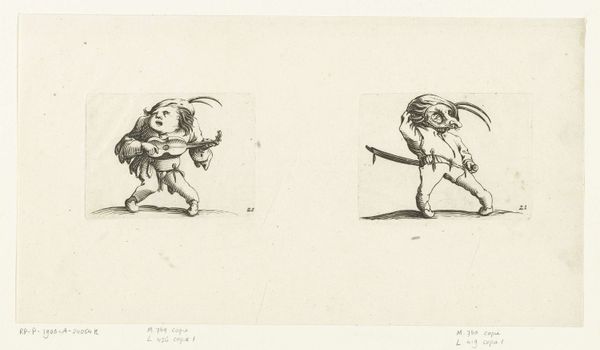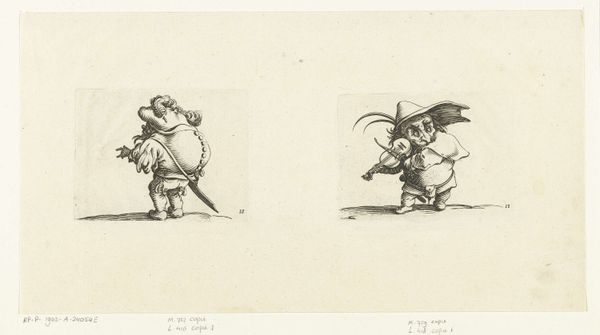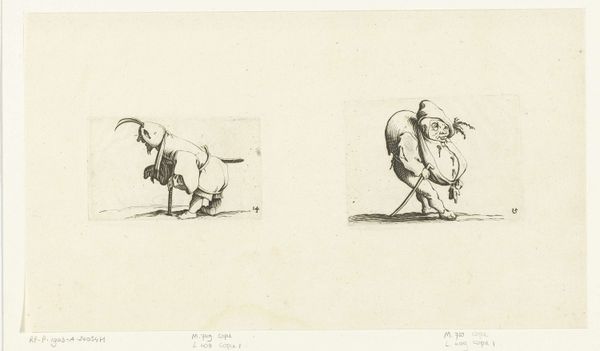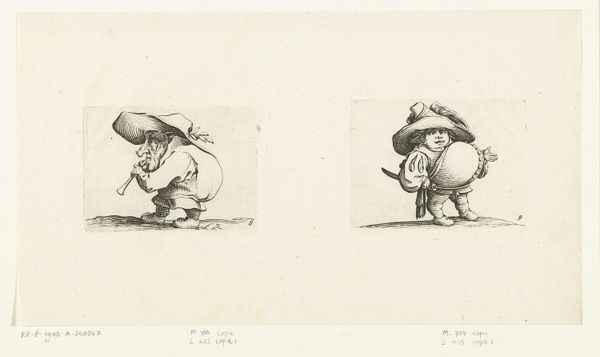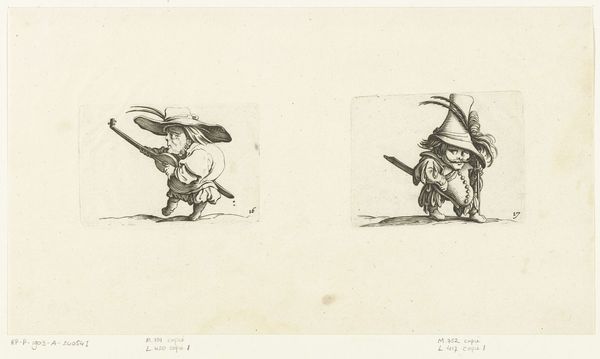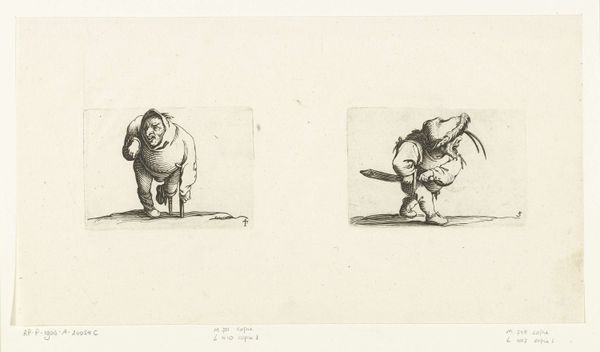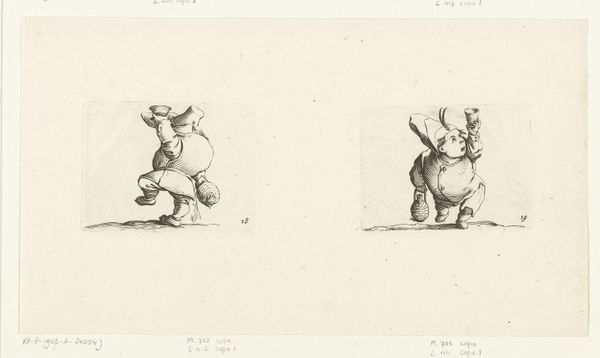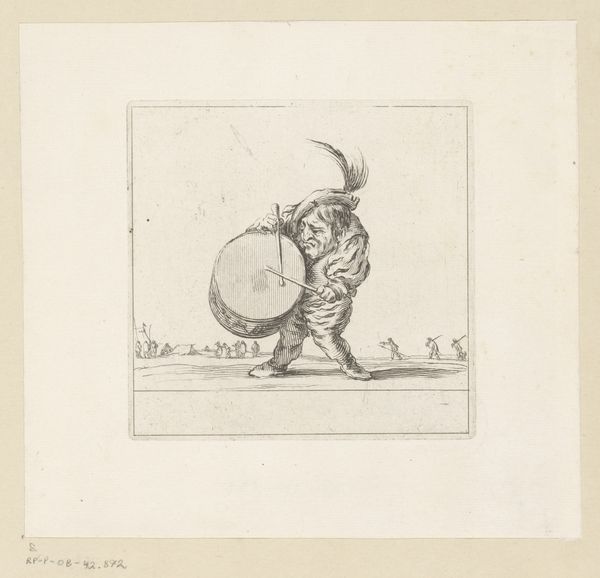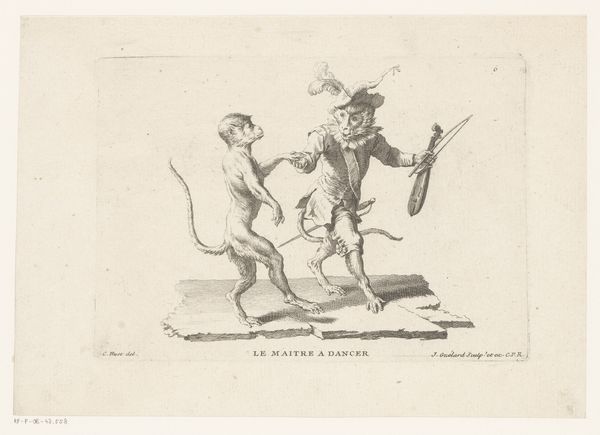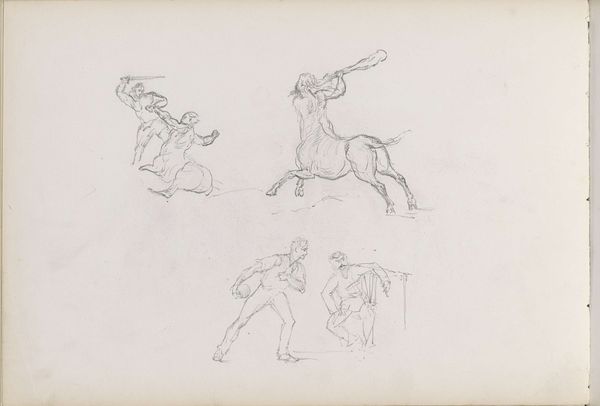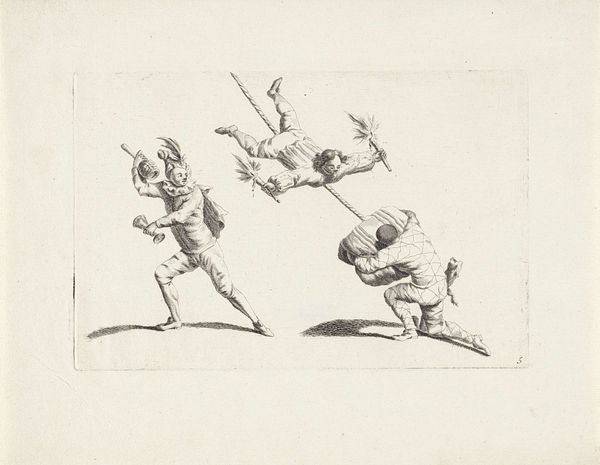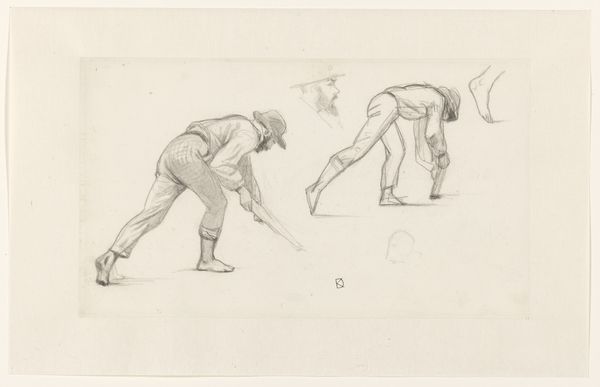
drawing, print, etching, engraving
#
drawing
#
imaginative character sketch
#
quirky sketch
#
baroque
# print
#
etching
#
fantasy-art
#
figuration
#
personal sketchbook
#
idea generation sketch
#
ink drawing experimentation
#
sketchbook drawing
#
storyboard and sketchbook work
#
sketchbook art
#
engraving
#
fantasy sketch
#
initial sketch
Dimensions: height 61 mm, width 83 mm, height 61 mm, width 83 mm, height 151 mm, width 278 mm
Copyright: Rijks Museum: Open Domain
Curator: So, here we have Abraham Bosse's "Dwerg met twee dolken," or "Grotesque figure with two swords," made sometime between 1621 and 1676. He used etching and engraving, a printmaking technique. Editor: I find the sketch intriguing; it has an experimental mood, as if the artist was trying out something new. What's your take? Curator: My attention is drawn to the techniques themselves. Think about the process. The labor of engraving the metal plate, the materials used – the inks, the paper. How did these limitations shape the artist’s expression, and perhaps, the distribution and consumption of such images at the time? Editor: That makes me think...etchings were probably pretty accessible then. Was this artist particularly known for his process? Curator: Absolutely. Bosse was key in codifying etching as a process, authoring "A short and easy way to draw all sorts of things in print." Now, considering this manual, does this print feel more like a quick experiment or part of a broader project connected with distribution of repeatable images? Editor: Knowing that the artist himself worked with the materials puts these sketches in a different perspective; the image now looks almost pedagogical, as if the artist wants to instruct other artists through it. Curator: Exactly! And what does that imply about the role of art at that time? It goes beyond the single precious object, right? Editor: Right, by focusing on the materials and process, we reveal its use. I had not thought of art being consumed through process. Curator: Focusing on production definitely shifts our perspective!
Comments
No comments
Be the first to comment and join the conversation on the ultimate creative platform.
